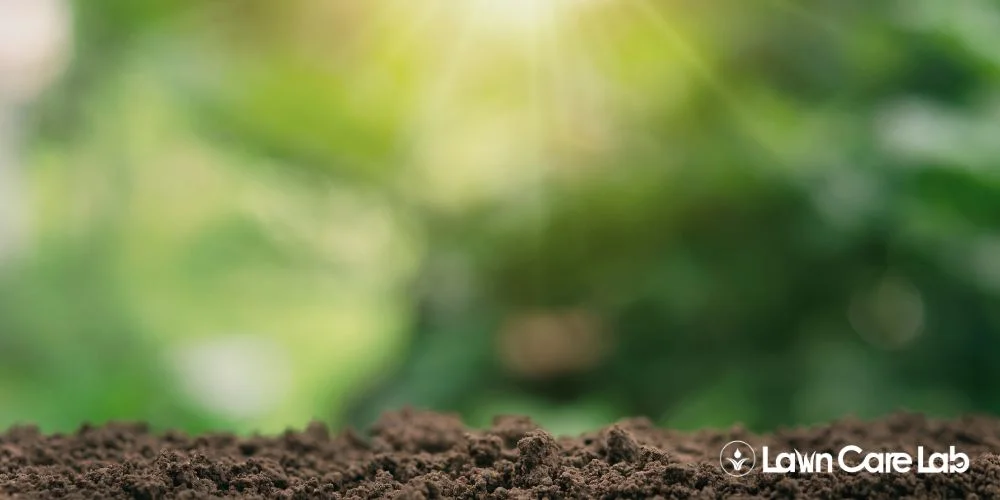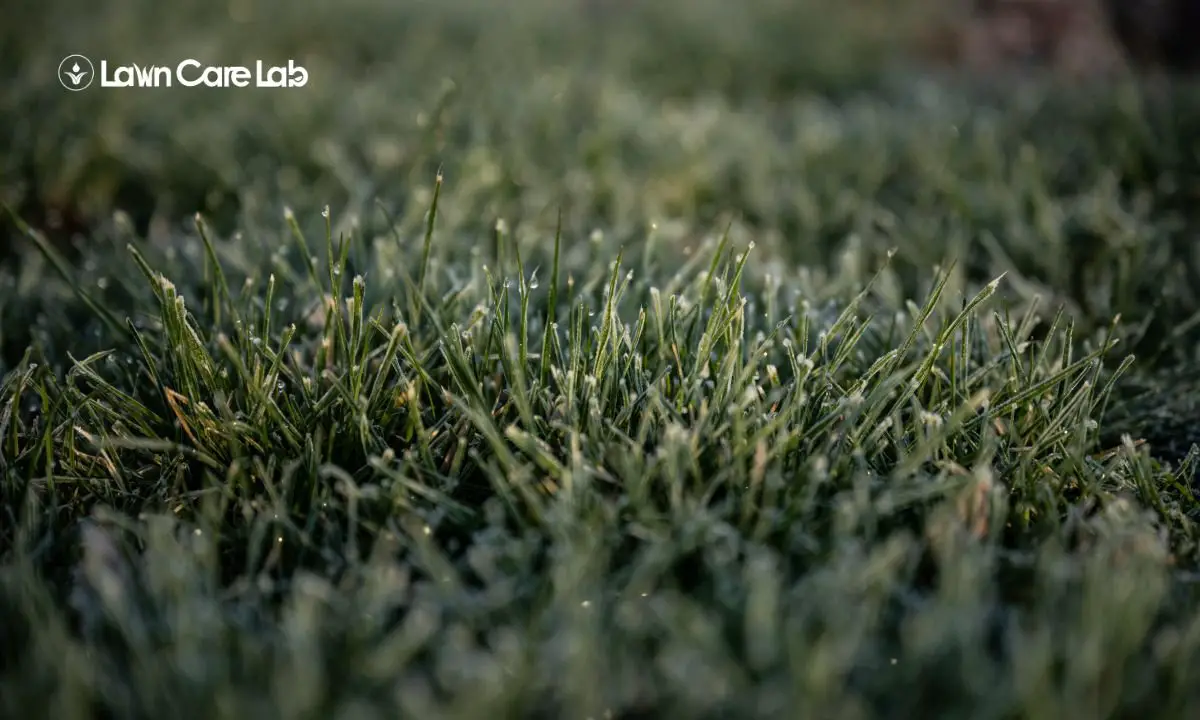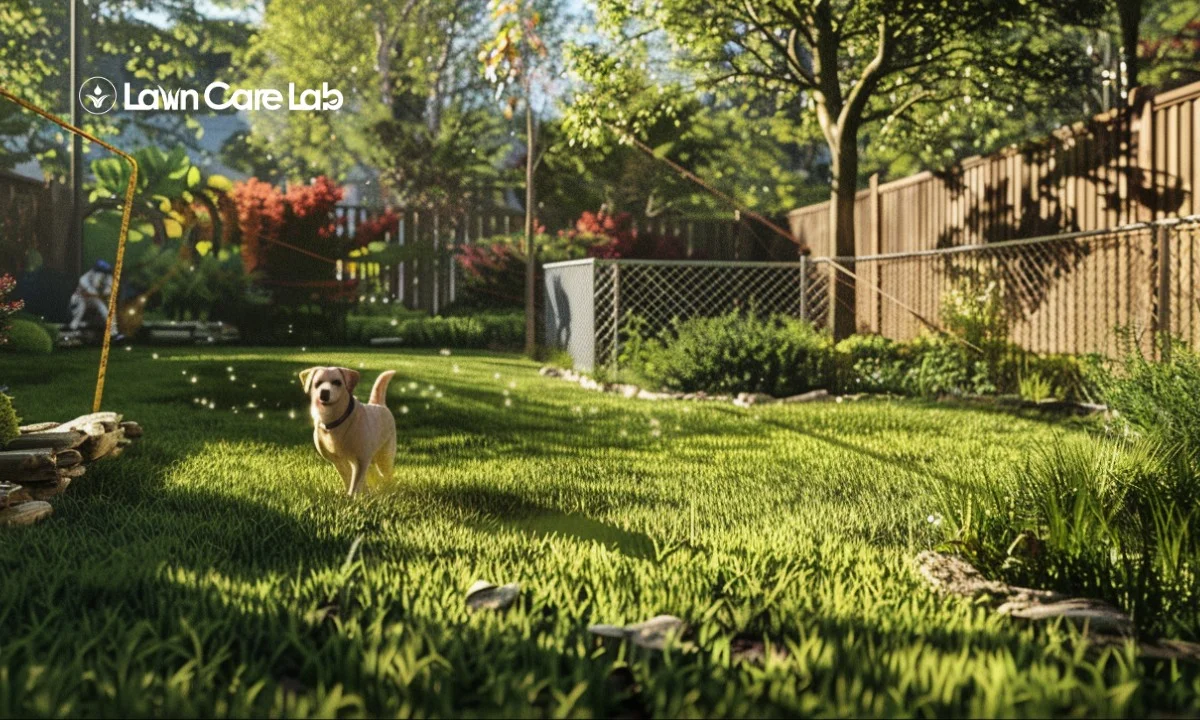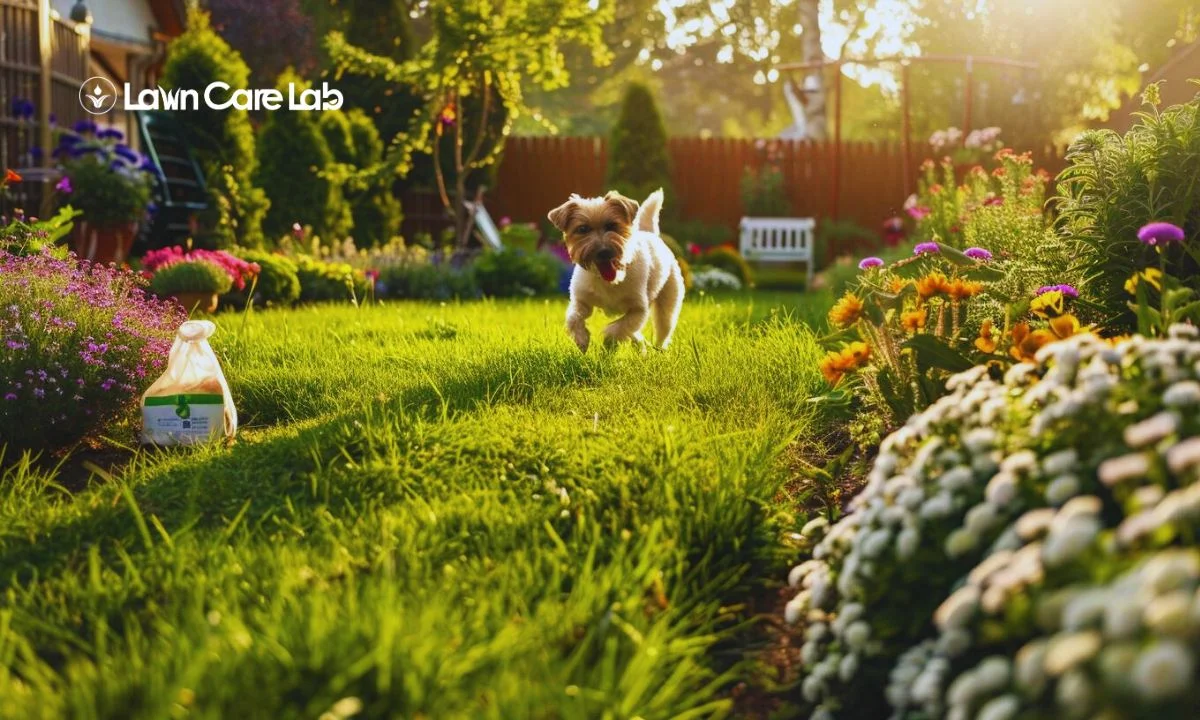You’re fed up with your dull, lifeless lawn and ready to take it to the next level. Let’s talk about Kentucky Bluegrass – that lush, emerald carpet that makes neighbors green with envy.
It’s not just for horse pastures and bourbon distilleries anymore! With some know-how, you can transform your tired turf into a masterpiece worthy of its garden show ribbon.
Highlights
- Kentucky Bluegrass forms dense and lush turf, creating a luxurious lawn.
- Kentucky Bluegrass is resistant to diseases and pests, reducing the risk of lawn damage.
- Kentucky Bluegrass withstands heavy foot traffic, making it perfect for backyard activities and sports fields.
- Kentucky Bluegrass has a deep-root system and can withstand drought conditions, requiring less watering and staying green during dry periods.
Table of Contents
Overview of Kentucky Bluegrass
Ever dreamt of owning a luxurious lawn that makes your neighbors green with envy?
Let’s dive into Kentucky Bluegrass, a gem known for its rich color and dense texture.
We’ll explore its key characteristics and some popular varieties that can transform your yard into a lush, verdant paradise.
Description and Key Characteristics
Kentucky bluegrass is renowned for its fine blades and rich dark green hue. Its key characteristics make it a prized choice for those desiring a masterpiece lawn.
- Kentucky bluegrass seed germinates with gusto, quickly filling your yard with lush grass.
- The best Kentucky bluegrass seed isn’t just any generic brand; go for top-notch varieties like ‘Midnight Kentucky Bluegrass’ to achieve that luxurious finish.
- This grass loves cool, humid climates, thriving in conditions other species may find challenging.
- With proper care, your Kentucky bluegrass sod will mature into an enviable carpet of greenery.
- The dense growth pattern of this grass is not only visually appealing but also aids in weed resistance.
Popular Kentucky Bluegrass Varieties
Let’s dive into popular options like Midnight, Award, Blue Velvet, BlueNote, Moonlight, and NuDestiny.
Each one is a rock star in its own right! When thinking Kentucky bluegrass vs. tall fescue or ryegrass – think ‘Rolls-Royce’ vs. ‘Ford.’ Tail fescue can be great if you’re on a budget and want decent mileage. But Kentucky bluegrass? That’s the epitome of lawn luxury!
The BlueNote variety will have your yard humming sweeter than a jazz solo, while Moonlight offers luminescent beauty that’ll make your neighbors green with envy.
So why settle for less when you can go full-on bluegrass Kentucky style? Choose wisely; let’s turn that lawn into a masterpiece!
Growing Conditions for Kentucky Bluegrass
Kentucky Bluegrass has its picky growing conditions.
Before you start dreaming of that lush emerald carpet under your feet, remember this grass diva demands a specific climate and region adaptability, along with a particular taste for sunlight and soil needs.
And don’t even get us started on the maintenance requirements.
Climate and Region Adaptability
Isn’t it astonishing how Kentucky Bluegrass flourishes exceptionally well in the cool, humid climates of the northeast, midwest, and northwest regions? It’s like this grass has its own weather app and migrates seasonally!
- Northeast: Bluegrass struts its stuff with gusto amidst New England’s infamous frigid winters.
- Midwest: The heartland is where bluegrass shows off its resilience. Tornado alley? More like ‘Kentucky Bluegrass Alley’!
- Northwest: Even in the perpetual drizzle of Seattle, bluegrass thrives. It practically dons a raincoat and dances in the rain.
With Kentucky Bluegrass on your lawn, you’re not just adapting to climate changes but boldly laughing in their face.
Sunlight and Soil Needs

Kentucky bluegrass, the Picasso of lawns, thrives in full sun but is no diva; it can also handle its fair share of shade.
Whether your gardens got the high noon glow or you wear the partial shadow hat, this adaptable star will shine on!
And let’s talk soil—this grass is no picky eater. It adapts to various soil types and pH levels like a champ.
So give your lawn that luxurious Kentucky bluegrass makeover—it deserves it!
Maintenance Requirements
Kentucky Bluegrass demands a bit of pampering, but trust me; it’s worth every drop of sweat!
Think of it as your weekly workout session – regular mowing during the growing season keeps your lawn fit and trim. Your neighborhood will be green with envy at your lush carpet-like grass!
And remember – moderate fertilization and irrigation are key.
Oh, and one more thing: dethatching. It might sound like a medieval torture method, but rest assured – it’s just to prevent nasty thatch buildup.
Benefits and Uses of Kentucky Bluegrass
Alright, let’s dive right into the beauty that is Kentucky Bluegrass. You’ll be chuffed to learn about its impressive durability and wear tolerance.
And if you thought that was all, wait until you see its stunning beauty and vibrant color, which can make your lawn look like a green carpet rolled out for royalty.
But hold onto your gardening gloves because this isn’t just a pretty face; the versatile uses of this turfgrass will knock your socks off!
Durability and Wear Tolerance
Imagine the pride you’d feel when your Kentucky bluegrass lawn withstands heavy foot traffic thanks to its superior wear tolerance and dense growth pattern.
The secret lies in the following:
- Its astonishing wear tolerance for high-traffic areas. Even when the kids decide to turn your lawn into a playground or when Fido gets frisky chasing his tail, this grass stays as lush as ever.
- The dense growth habit that spreads love (or, in this case, grass) all around! It’s like nature’s own carpet repair kit!
- The rhizomes spread beneath the surface, tirelessly covering every inch of your yard.
So let them wonder about your masterpiece lawn while you revel in the glory of Kentucky bluegrass!
Beauty and Color
Kentucky bluegrass is a deep green to blue-green hue that resembles a Monet painting that’s alive under your feet—only better because it doesn’t cost millions!
| Bluegrass Feature | Why It Rocks | How To Get It |
|---|---|---|
| Deep Green Hue | Your lawn looks like a lush emerald sea. | Water regularly and mow high for optimal color. |
| Fine-Medium Texture | The soft carpet-like feel makes barefoot strolls a dreamy experience. | Regular fertilization helps maintain texture. |
| Vibrant Color Even in Cold Weather | Keeps its dashing good looks throughout the chills of winter. | Aerate and overseed in fall to prepare for winter. |
The beauty of Kentucky bluegrass isn’t just skin-deep—it’s leaf-deep too!
Versatile Turfgrass Uses
You’ll find that this versatile turfgrass isn’t just a pretty face—it’s got serious utility too! From your backyard to the local park, Kentucky Bluegrass is the Clark Kent of grasses—it may seem ordinary, but it’s got superpowers hiding underneath.
This all-star grass thrives in sports fields and golf courses alike. So go ahead, host that neighborhood soccer match, or put Tiger Woods in your own backyard!
Got a green thumb? No problem. You can grow Kentucky Bluegrass from seed, sod, or plugs—talk about flexibility! With its myriad uses and easy-care nature, achieving a masterpiece lawn has never been easier—or more fun!
Kentucky Bluegrass vs. Other Cool Season Grasses
Have you ever wondered how Kentucky Bluegrass stacks up against Tall Fescue, Perennial Ryegrass, or Fine Fescue?
Well, buckle up because we’re about to embark on a turf tussle that’ll leave you with some serious lawn knowledge and maybe even a chuckle.
Kentucky Bluegrass vs. Tall Fescue
Let’s break this down like a science experiment you can discuss at your next garden party.
Here is a little cheat sheet for you:
| Tall Fescue | Kentucky Bluegrass | |
|---|---|---|
| Heat Tolerance | Superior | Just Okay |
| Turf Formation | Single guy living in an apartment | The whole Brady Bunch |
| It needs your creative touch | Basic care will do | Needs your creative touch |
The fescue may be better suited for a summer fling with its heat tolerance. But if you want a full-on romance with your yard, nothing beats the dense turf of Kentucky Bluegrass. It requires innovative care but rewards handsomely.
Kentucky Bluegrass vs. Perennial Ryegrass
Let’s compare Kentucky Bluegrass and Perennial Ryegrass. While Ryegrass may have a quick establishment, remember that quick fixes aren’t always the best in the long run.
Here’s why you should choose bluegrass:
- Kentucky Bluegrass has a luxurious feel and makes for a stunning lawn.
- It thrives even under heavy foot traffic – perfect for backyard football games.
- It boasts superior resistance to diseases and pests.
- The slower pace of growth means less frequent mowing.
- Its deep-root system allows it to withstand drought better than ryegrass.
In short, if you’re seeking an innovative solution for a durable, masterpiece lawn, Kentucky Bluegrass gets our vote!
Kentucky Bluegrass vs. Fine Fescue
Let’s pit fine Fescue against our previous champ to see who comes out on top!
Fine fescue is like that introverted friend who thrives in dim, cool hangouts.
Kentucky bluegrass, however, is your extroverted buddy always ready for a foot traffic fiesta.
Sure, fine fescue might win the shade game, but when it comes to resilience under pressure (literally), it’s no match for the robust bluegrass.
Ultimately, it boils down to what you need.
Got lots of trees providing ample shade? Fine fescue could be your pick.
But if you’re dreaming about kids and pets romping around without turning your lawn into a mud pit, Kentucky Bluegrass is your clear winner!
Conclusion
So, you’re sold on Kentucky Bluegrass? Good choice.
Nothing beats the lush green carpet it lays out. It’s a diva in its own right, but with some TLC, it will treat your eyes daily. Outshining other cool-season grasses – that’s just its thing!
Remember the golden rule: Water well, fertilize wisely, and mow regularly.
FAQs on Kentucky Bluegrass
What distinguishes Kentucky bluegrass from other types of grass?
Is Kentucky bluegrass best suited for sunny or shady areas?
Can Kentucky bluegrass help control weed growth?
What are the consequences of not mowing Kentucky bluegrass?
Does Kentucky bluegrass have the ability to spread and cover bare areas?
Is it advisable to overseed with Kentucky bluegrass?
How difficult is it to maintain Kentucky bluegrass?
Does Kentucky bluegrass require a high amount of water?
- How to Create a Lawn Care Schedule for Southern Climates - October 30, 2024
- How to Use Compost Tea to Boost Lawn Growth and Soil Health - October 23, 2024
- The Best Grasses for Saltwater-Exposed Lawns: Coastal Lawn Care - October 17, 2024




